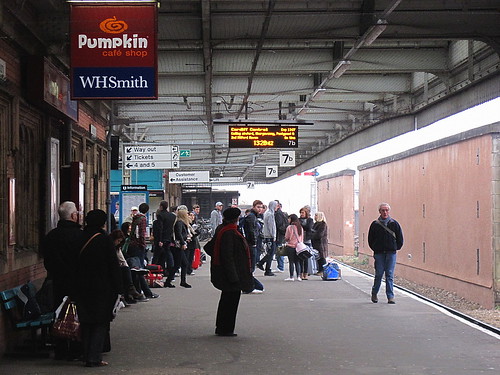As part of the process of writing my blog posts, I often scour the web to find articles and resources that serve as inspiration or ideas for my posts. Once found, I often add them to Evernote and then review them periodically for inspiration.
That was the case today. I was going through my ‘clipped’ articles on Evernote when I came across: Understanding the Psychology of Queuing [Infographic] from the Business2Community site back in June of this year. This built on the 6 Tenets of Queuing [Infographic] that Lavi posted on it’s own blog back in May of this year.
I think this is a fascinating infographic, inspired by the writings of David Maister in The Psychology of Waiting Lines.
Whilst, I’ve included the infographic below for you, it was the phrase (below) that jumped out at me from the article that they wrote supporting the infographic:
“what matters most in a waiting line is how people feel about the experience rather than the waiting itself. “
Queuing, I believe, is something that none of us, as customers, like and it is a constant source of annoyance and frustration.
Why? Well, in large part, I guess, it is done to the fact that when we want to do something, buy something, eat something, ask something or have a problem solved we want to do it now and, therefore, don’t like to wait.
I think many companies recognise this but, in fact, they don’t spend a lot of time thinking about the impact queuing has on its customer service or customer experience. The reason, I think, is that many companies design their waiting or queuing systems with their own processes in mind and that it is why queuing and waiting is an oft overlooked element in the customer service or customer experience process.
However, if you ask your customers then they’ll tell you that it is one that can have the biggest impact.
Looking at the 6 Tenets reminded me of a couple of examples of of good practice that I’d like to share with you.
One, came from a conversation that I had with Phil Barden (Customer service and customer loyalty can be improved by using decision science) about his recent book: Decoded: The Science Behind Why We Buy. In the interview, Phil told me a story about the impact of the introduction of digital signage at train stations. These signs (like the one at the beginning of this post) let travelers know when trains are due. Their introduction has gone a long way to address Tenets 4 and 5 in the infographic and customers willingness to wait.
The second example, came from my experience at a local restaurant that I wrote about in Customer retention: How do you make your customer waiting experience sticky? What they have done speaks to Tenets 1 and 2.
These are just two examples of the Tenets in action but there are lots of others out there that we can learn from.
But, I believe, that there is still a lot that can be done and we shouldn’t underestimate the impact of waiting or queuing on a business’ ability to deliver great customer service or a great customer experience.
Thanks to Snapshooter46 for the image.






Hi Adrian,
Very useful post and that info graphic creates a nice overview of different situations and solutions.
There’s one thing I missed though, which is queuing on the telephone. What should or could businesses do? I maybe dislike queuing on the telephone even more than queuing in a line, especially when there’s annoying background music 🙂
Any ideas?
Best wishes!
Robbin Kleinpenning